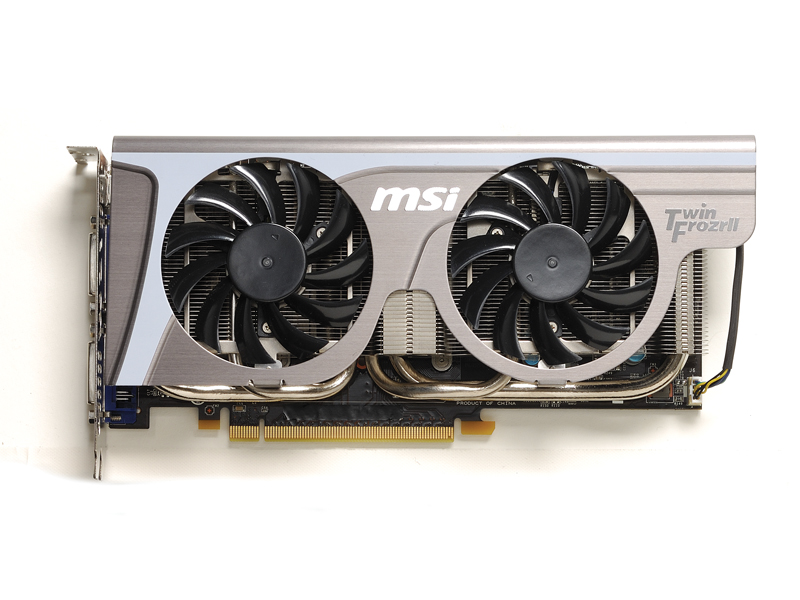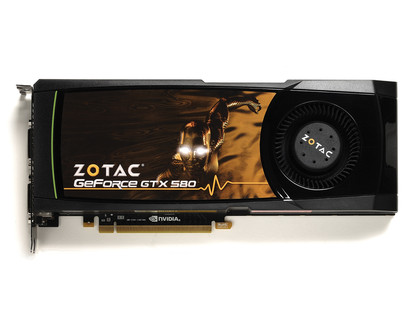Top graphics cards for 3D gaming: 8 reviewed

Stereoscopic 3D might seem straightforward, but you'll need a lot of boxes ticked if you want to enjoy it on your PC. As well as a 3D-capable monitor with a refresh rate of 120Hz, your computer needs a graphics card that's powerful enough to handle 3D content.
To generate 3D images, the graphics card has to produce the graphics twice, creating a slightly different image for each eye. This extra workload can put a lot of strain on the card.
Most modern cards include 3D capabilities - especially recent Nvidia cards, which support Nvidia 3D Vision - so finding one that can display 3D content isn't a problem. The trick is finding a graphics card that can display 3D without any noticeable drop in image quality.
You don't want to spend money on a card only to find that the frame rate plummets when you turn on 3D effects, leading to choppy, stuttering movies and unplayable games.
Upgrading from two dimensions isn't the only reason to buy a new graphics card. More powerful GPUs make for better graphics all round. While modern computer games benefit most from a powerful card, other applications will also show an improvement. Video editing in particular benefits from a muscular card, because many movie-making tools now take advantage of technology like Nvidia's CUDA, which hands more processing tasks to the graphics card, freeing up the PC's processor for other tasks.
Getting the right graphics card can make a huge impact on your computer, and we'll show you some of the best.
EVGA GTX 460 1GB - £139
www.evga.com
Sign up for breaking news, reviews, opinion, top tech deals, and more.
MSI GeForce GTX 560 Ti - £176
http://uk.msi.com
Zotac GeForce GTX 570 - £260
www.zotac.com
Zotac GeForce GTX 580 - £385
www.zotac.com
Asus GeForce GTX 590 - £580
http://uk.asus.com
Sapphire Radeon HD 6950 - £181
www.sapphiretech.com
HIS Radeon HD 6970 - £265
www.hisdigital.com
Asus Radeon HD 6990 - £501
http://uk.asus.com
EVGA GTX 460 1GB

Nvidia has had a long history of creating superb mid-range cards, from the 6600 GT to the incredible 8800 GT, and the GTX 460 can sit happily among such illustrious forebears. Its launch price was £200, but you can now easily pick up an overclocked 1GB version for as little as £140.
If any graphics card can be described as a hero, surely this is it. It no longer leads the market in performance, but it's not as far off the pace as you might imagine from its age. It's the oldest and slowest model in this test, but its price keeps it competitive.
When you consider that it's nearly £50 less than the cheapest HD 6870, and with performance that is just shy of the AMD card, it's quite a bargain.
Read TechRadar's full EVGA GTX 460 1GB review
MSI GeForce GTX 560 Ti

Just as the GTX 570 was beginning to replace the GTX 480, leaving the GTX 580 on its own at the head of the single-GPU pack, the GTX 560 Ti appeared to take over from the GTX 470. That's a lot of numbers, but it does make sense - especially when you look at the performance of those GTX 460s, even in today's highly competitive market.
It would make no sense for Nvidia to kill off one of its best cards, but it's not quite as simple as just another transistor-level tweak of the GTX 470's design. The GTX 560 Ti is more of a halfway house between the GTX 470 and GTX 460; it has 64 fewer CUDA cores and eight fewer ROPs than the former.
To make up for this shortfall in GPU spec, it comes out of the box with the fastest core clockspeed we've seen in an Nvidia GPU since the FX 5xxx series.
Read TechRadar's full MSI GeForce GTX 560 Ti review
Zotac GeForce GTX 570

This card represents the second tier of Nvidia's Fermi lineup. It's an impressive performer, and a little cheaper than AMD's top single card, the HD 6970. It has more in common with the Nvidia GTX 480 though, with almost the same basic GPU layout.
The GTX 570 has the same 480 CUDA cores and 60 texture units, but has 40 ROPs compared to the GTX 480's 48. The 570 also has a smaller frame buffer, at 1,280MB compared to the previous generation's 1,536MB. It packs the same transistor-level re-engineering as the GTX 580, though.
As such, it's a much more efficient, cooler graphics card, and its performance metrics will be almost as good if you're running a sub-30-inch panel.
Read TechRadar's full Zotac GeForce GTX 570 review
Zotac GeForce GTX 580

Let's not beat around the bush; Nvidia's GTX 580 is the best single-GPU card on the market. It held sway over all the others across every one of the benchmarks we ran.
This is due to the GF110 GPU at its heart. Fermi has proven to be the best GPU architecture Nvidia has ever manufactured, and with this second generation (the GTX 5xx series) it's gone from strength to strength.
The first Fermi, the GTX 480, was the top card of its day, but not without issues. These were the amount of power it needed and the amount of heat it generated. For the GTX 580, Nvidia's engineers went back to the drawing board and tweaked the design right down to the transistor level, tailoring the smallest parts to give the best performance where needed, and the best efficiency where speed wasn't the goal.
- 1
- 2
Current page: Top graphics cards for 3D gaming: 8 reviewed
Next Page Four more graphics cards to choose from